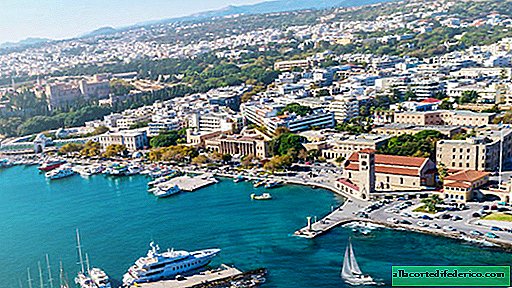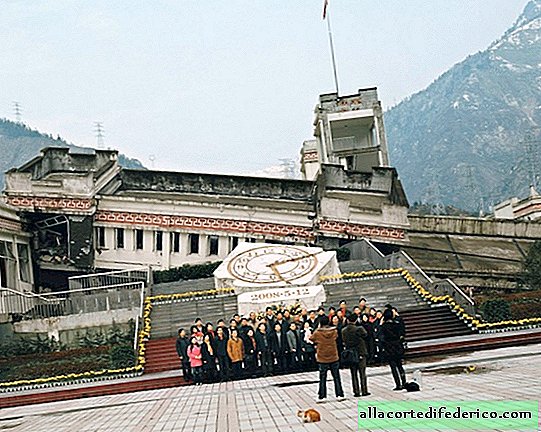What the forgotten 7 wonders of the ancient world really looked like
Today, when planning a trip, any person first of all goes to the Internet to get acquainted with the rating of attractions and to learn from other tourists about places that he should visit without fail, and about those places that are neither worth the effort nor the time. Here we have to stop and thank heaven for a worldwide network, because many decades and centuries ago to get information about must visit locations was much more difficult. If you were an ancient tourist, you would have to seek travel advice from learned people, who, in turn, also received third-party information. As a matter of fact, it was in this way that the list of the most amazing tourist sites in the world was once formed, today known as the "Seven Wonders of the World."
This was a list of stunning examples of the imagination and resourcefulness of man, amazing architecture and ingenious engineering, compiled by various Hellenic authors in the form of guides and sung in their poetry dating back to 1-2 centuries BC. But if you decide to use this old guide to build your tourist route on your next vacation, you will be very disappointed. Only one of the ancient miracles of this mortal world has survived all the hardships and blows of time - this is the mighty Great Pyramid of Giza.
Despite the fact that almost all the wonders of the world have sunk into oblivion, they continue to inspire representatives of culture and art around the world. So, the architectural bureau Budget Direct gave modern people the opportunity to see the masterpieces of ancient architecture, at least in the virtual world. After thorough research, study of relevant materials and testimonies, the bureau designers developed 3D images that were as close to reality as possible and demonstrated how the Seven Wonders of the World looked when they were at the peak of their shape.
The Colossus of Rhodes


The sculpture of the Colossus of Rhodes was made of molten weapons remaining after the crushing victory of the Rhodians over the Cypriots. Work on it lasted twelve years. The giant for that era 30-meter statue representing Helios, the god of the sun among the ancient Greeks, towered over the harbor of Mandraki in Rhodes. It was erected in such a way that the ships passed between the legs of the Colossus. Alas, despite all the apparent power and grandeur of the structure, it was destroyed by an earthquake only 56 years after the construction.
Great Pyramid of Giza


Today, almost every day we read that somewhere in the world they built the tallest building that broke the previous record. But no one thinks that until the 19th century, humanity was not capable of erecting a structure that was higher than the Great Pyramid in Giza. This building maintained the status of the highest on the planet for more than four thousand years! In 2,560 BC the inhabitants of ancient Egypt managed to create a pyramid with a height of 147 meters, which became the last earthly haven of the Egyptian king Khufu. Tens of thousands of people worked to stack 2.3 million stone blocks, the weight of which ranged from 2.5 to 15 tons, in a harmonious and flawless construction.
Hanging Gardens of Babylon


To this day, researchers are not able to answer with certainty the question of whether this masterpiece of engineering actually existed. Scientists are baffled by the fact that the construction of epic 20-meter terraces with sophisticated equipment was an impossible task for those times. According to legend, the Hanging Gardens, which the Babylonian king Nebuchadnezzar gave his wife Amitis, were located on the territory of modern Iraq, on the shores of the famous Euphrates.
Alexandrian lighthouse


The lighthouse, which became a model of excellence for all future similar structures, was built by order of Ptolemy I at the end of the IV beginning of the III century BC. in Egypt. The building, stunning in its grandeur, reached hundreds of meters in height and for many centuries occupied the third position in the ranking of the tallest buildings in the world. The magnificent lighthouse was destroyed by earthquakes between 12 and 16 centuries. Over time, a medieval fortress was erected in its place.
Mausoleum in Halicarnassus


The word "mausoleum", which we describe today as a huge room serving as a burial place, was in fact once a name. This name was the king of Caria, for which the giant, very complex in structure and impressive tomb was first built. An impressive 45-meter mausoleum was located on the territory of modern Bodrum and was erected in 350 BC. A luxurious funeral monument made of white marble, decorated with Egyptian, Greek and Lycian sculptures, fell victim to several earthquakes that occurred in the 13th century.
Statue of Zeus


A delightful 13-meter-high figure of Zeus, made of the rarest tree species, gold details and ivory with inlaid precious stones, was installed in Olympia in 430 BC. Alas, the god of thunder did not dazzle with his greatness for very short time, only a few centuries. The statue did not pass the test of fire and was destroyed in a fire in 425, and the precious materials that survived in the fire were stolen.
Temple of Artemis at Ephesus


You can talk about this pagan architectural masterpiece endlessly, the whole history of this long-suffering building is to blame. One thing is undeniably clear: the temple was very provocative. The construction, erected in honor of the Greek goddess of chastity, hunting, wild animals, forests and fertility, was destroyed and rose from the ruins three times. For the last time at the beginning of the 5th century, Christians left only a foundation and one column from a magnificent temple. It is these meager remains that can be visited in Turkey to this day.

















